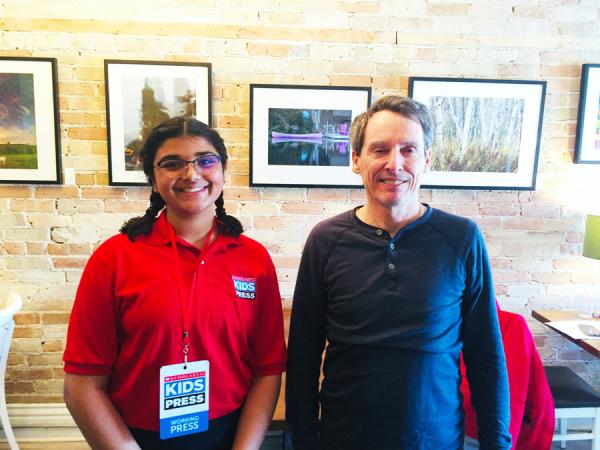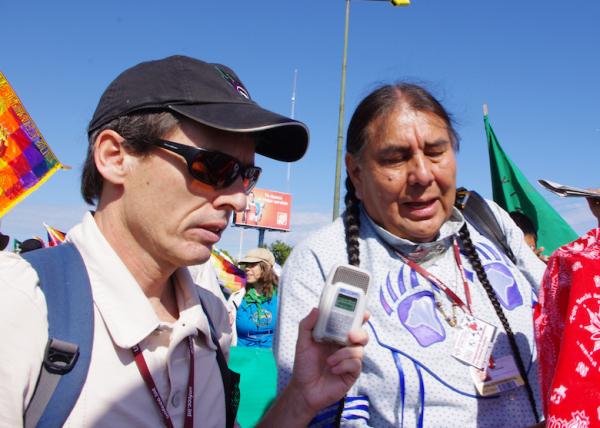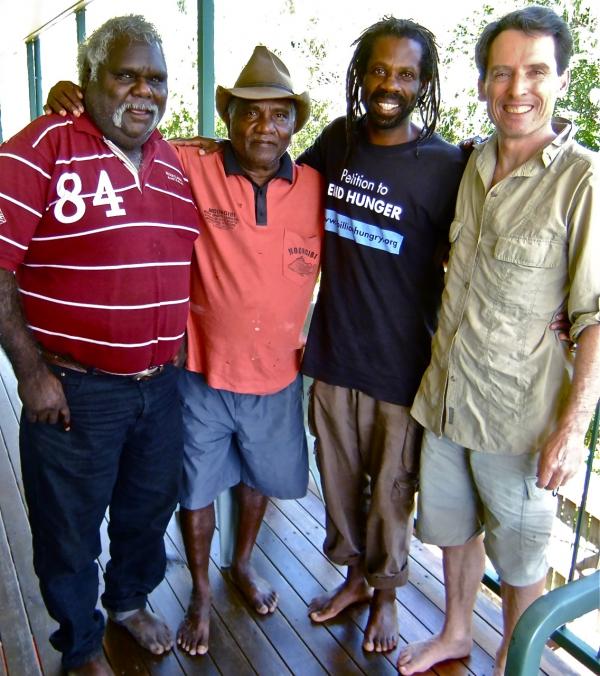KID REPORTERS’ NOTEBOOK
An Environmental Journalist Discusses Climate Change


Nikita met with environmental journalist Stephen Leahy in Ontario before social distancing measures were put in place because of the coronavirus pandemic.
April 22 is Earth Day. Established in 1970, the annual event is designed to raise awareness about our role as stewards of the environment. Strides have been made to curb air and water pollution in the past 50 years, but the planet is warming at an alarming rate due to climate change.
What are the causes and consequences of climate change? And what are the solutions? Before the coronavirus pandemic, I spoke with Canadian journalist Stephen Leahy in Ontario. He has won several awards for his reporting on the environment.
When we burn fossil fuels by driving cars and powering homes and factories, CO2 is emitted into the atmosphere, trapping sunlight and heating the planet. These actions have gradually contributed to climate change, which Leahy likens to “covering up with a blanket when you’re already nice and warm.”
In recent decades, we have seen melting ice caps, rising sea levels, and disrupted jet streams around the world. The number of extreme weather events has increased, with hurricanes, wildfires, and droughts becoming increasingly severe. Scientists attribute these new patterns to climate change.

Leahy interviews a leader of Indigenous people at a march for climate action in Cancun, Mexico.
WHEN DID CLIMATE CHANGE START?
About 200 years ago, advances in industry led to the burning of fossil fuels. “It probably started first with coal,” Leahy said. We later found ways to use the energy stored in other fossil fuels, including oil and gas, thus supporting the Industrial Revolution.
The Industrial Revolution had many economic benefits. “But we’re beginning to understand that the negative impacts of climate change are much larger and longer-lasting than we realized,” Leahy says. These include diminished land availability due to floods and forest fires, and increasing difficulty growing food because of sporadic weather patterns.
Another serious consequence, Leahy told me recently, is the emergence of new pathogens. Melting ice caps may reveal unknown bacteria and viruses that have been hidden for centuries. A recent study conducted by Harvard University, which has not yet been validated by peer-review, has linked poor air quality to the increasing lethality of respiratory viruses, including COVID-19.

Leahy visits with an ethnobiologist (the study of cultures and environments) and members of an Aboriginal community while researching a story about climate change in Australia.
A BETTER FUTURE
In response to grassroots activism across the globe, governments and businesses have begun to implement green technologies, including renewable energy sources. Battery technology has become a viable energy storage system. These innovations, Leahy notes, show that “we do have alternatives to fossil fuels.”
Leahy urges everyone to reduce waste and be more mindful of our energy usage. It’s also important, he says, to discuss climate change and participate in student protests like “Fridays for Future.” By participating, Leahy adds, “you realize that you’re not alone.” [Editor’s note: These events have since been put on hold because of the coronavirus pandemic.]
Other ways to lower your carbon footprint include walking instead of driving, bringing reusable bags to the grocery store, and eating less meat. These actions have many benefits, including reduced air pollution and CO2 emissions.
Leahy and several climate-change researchers are now pointing out that the enforced global shut-down due to the coronavirus pandemic has led to an improvement in air quality in many areas. The stay-at-home orders also have introduced many people to a new, eco-friendly lifestyle.
“We’ve learned that we can do some things differently,” Leahy says. “The future could be a lot better if we’re smart about it.”
